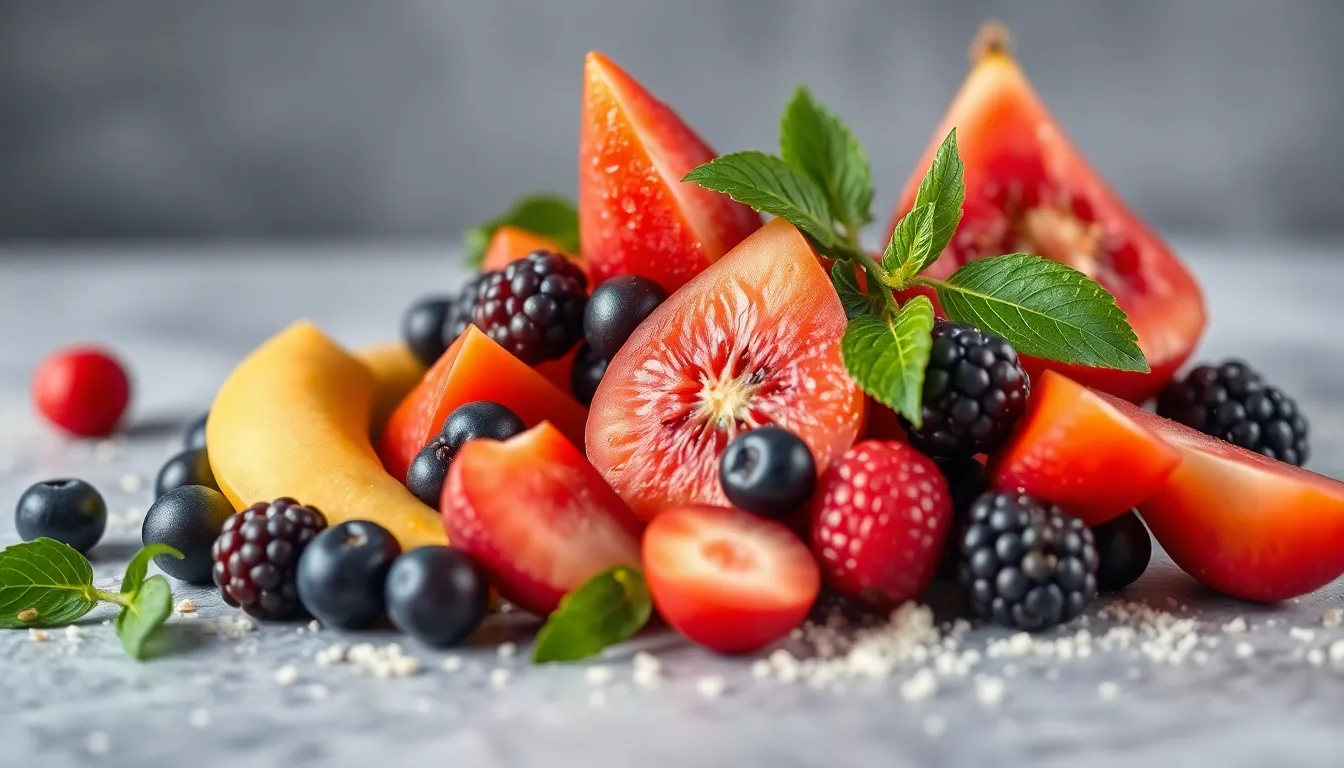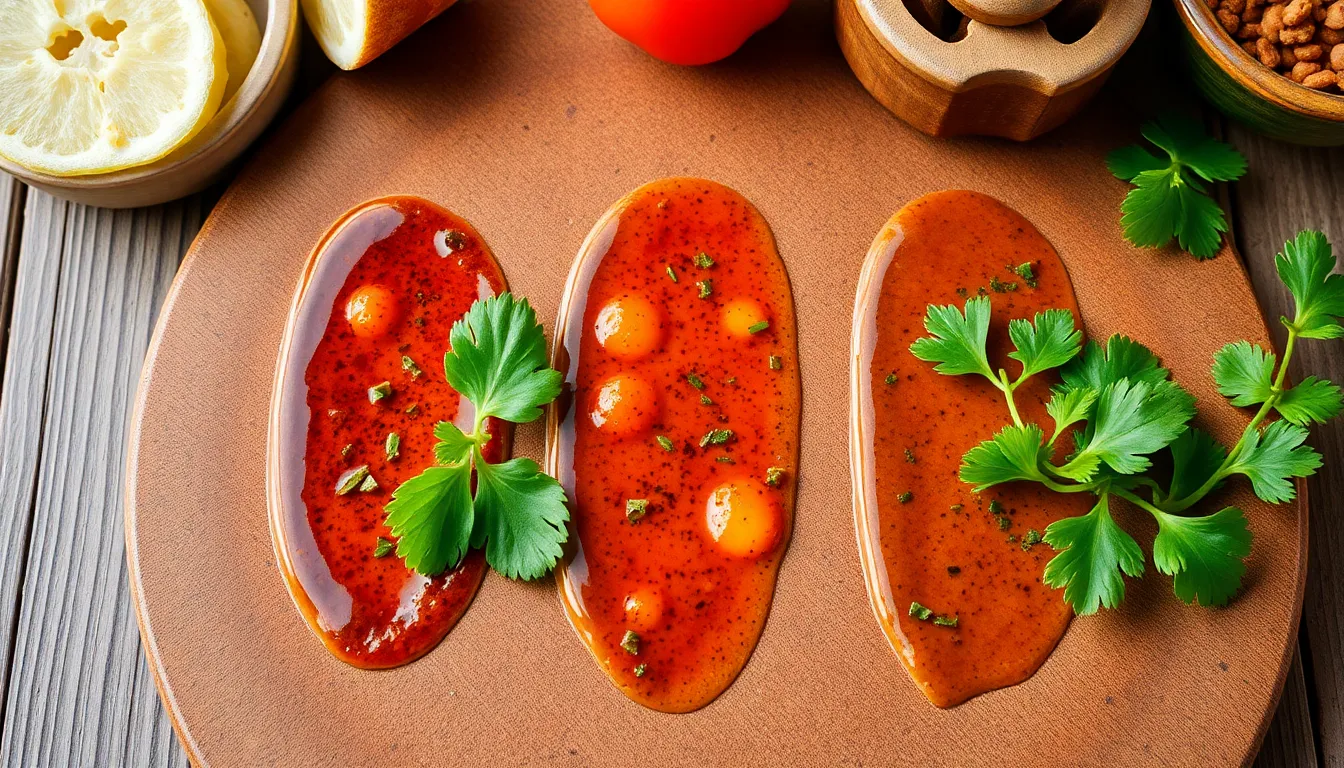How to Create a Smoking Flavor Profile: Pairing Woods and Meats
Smoking is an ancient cooking technique that not only preserves food but also infuses it with rich, complex flavors. The art of smoking is as much about the smoke itself as it is about the meat being cooked. Understanding how to create a smoking flavor profile is essential for any pitmaster or home cook who wants to elevate their barbecue game. One of the key elements in achieving this is choosing the right type of wood for smoking.
This article serves as a comprehensive guide to help you pair different woods with various meats for optimal flavor. We will explore the types of smoking woods available, how they affect flavor, general guidelines for pairing, and valuable tips for smoking meat. Let’s dive into the world of smoking!
Section 1: Understanding Smoking Woods
1.1 Types of Smoking Woods
There are several types of wood used in smoking, each imparting its unique flavor characteristics to the meat. Below are some popular options:
- Hickory: Known for its strong, hearty flavor, hickory is a favorite for smoked meats, especially pork and beef. It provides a rich, bacon-like taste.
- Mesquite: This wood offers a bold, earthy flavor that pairs well with poultry and beef. Mesquite burns hot and fast, making it ideal for quick cooks.
- Applewood: With a sweet, mild flavor, applewood is perfect for smoking pork and poultry. It adds a fruity aroma that complements the natural flavors of the meat.
- Cherry: Cherry wood imparts a slightly sweet, fruity flavor, making it an excellent choice for pork and game meats. It also enhances the color of the meat.
- Oak: Versatile and medium in flavor, oak is a great all-purpose wood. It pairs well with both beef and game meats, providing a balanced smoke.
1.2 How Wood Type Affects Flavor
Each wood type not only contributes its unique flavor but also interacts with the natural flavors of the meat. The intensity of the wood’s smoke can enhance or overwhelm the meat’s flavor. Therefore, achieving a balance between wood flavor and meat flavor is crucial:
- Light Woods: Such as apple and cherry, provide mild flavors that complement rather than overpower meats.
- Medium Woods: Like oak, deliver balanced flavors suitable for various meat types.
- Strong Woods: Hickory and mesquite offer intense flavors and should be used sparingly to avoid overpowering the dish.
Understanding these characteristics helps you make informed choices when selecting wood for smoking, ensuring that the final result is perfectly balanced and flavorful.
Section 2: Pairing Woods with Meats
2.1 General Guidelines for Pairing
When pairing woods with meats, consider the flavor profiles of both the wood and the meat. Here are some general guidelines:
- Beef: Strong-flavored woods like hickory and mesquite work well. Oak can also serve as a versatile option.
- Pork: Applewood and cherry wood provide a sweet touch, while hickory adds a hearty smoke.
- Poultry: Light woods such as apple and cherry enhance the delicate flavors of chicken and turkey.
- Fish: Mild woods like alder and fruit woods can impart subtle flavors that won’t overpower the fish.
These recommendations provide a solid foundation for creating delicious smoked meats that highlight the unique characteristics of both the wood and the meat.
2.2 Wood and Meat Pairing Table
| Wood Type | Best Paired Meats | Flavor Notes |
|---|---|---|
| Hickory | Beef, Pork | Strong, hearty flavor |
| Mesquite | Poultry, Beef | Bold, earthy taste |
| Applewood | Pork, Poultry | Sweet, mild flavor |
| Cherry | Pork, Game Meats | Slightly sweet, fruity flavor |
| Oak | Beef, Game Meats | Medium flavor, versatile |
Section 3: Tips for Smoking Meat
3.1 Preparing Your Meat
Before you begin smoking, proper preparation of the meat is essential. Here are some tips:
- Marinating: Marinating your meat can enhance its flavor and tenderness. Consider using marinades that complement your chosen wood type.
- Rubs: A dry rub can add a crusty layer of flavor. Common rub ingredients include salt, pepper, paprika, garlic powder, and brown sugar. Tailor your rub to match the wood’s flavor profile.
- Resting: After marinating or applying the rub, let the meat rest for a while to allow the flavors to penetrate.
3.2 Smoking Techniques
Understanding different smoking methods can greatly influence your results. Here are the two primary techniques:
- Cold Smoking: Used for preserving and flavoring rather than cooking. Ideal for meats like salmon and cheese, it requires a temperature below 100°F (37°C).
- Hot Smoking: This is the most common method for cooking meats. Temperatures range from 225°F to 250°F (107°C to 121°C), allowing the meat to cook and absorb smoke simultaneously.
To set up your smoker:
- Soak your wood chips in water for at least 30 minutes if you’re using a gas or electric smoker. This helps to create smoke.
- Preheat your smoker to the desired temperature.
- Add the wood chips to the smoker box or directly on the coals if using a charcoal smoker.
- Place your seasoned meat on the grill grates. Close the lid and monitor the temperature.
- Maintain a steady temperature throughout the cooking process, adding more wood as necessary.
3.3 Monitoring and Adjusting Flavor
It’s vital to monitor the smoking process to achieve your desired flavor profile. Here are some tips:
- Check the Smoke Color: A thin blue smoke indicates clean burning wood, while thick white smoke may impart a bitter taste to the meat.
- Time and Temperature: Use a meat thermometer to ensure your meat reaches the desired internal temperature without overcooking.
- Taste Testing: Slice a small piece of meat to taste during the cooking process. This will help you gauge how the flavors are developing and whether you want to adjust your wood or technique.
Conclusion
Creating a smoking flavor profile is an art that combines the science of cooking with the nuances of flavor. By understanding the types of smoking woods and how they pair with different meats, you can create a culinary experience that is both delicious and memorable. Remember to experiment with various woods and meat combinations to discover your personal favorites. Happy smoking!




